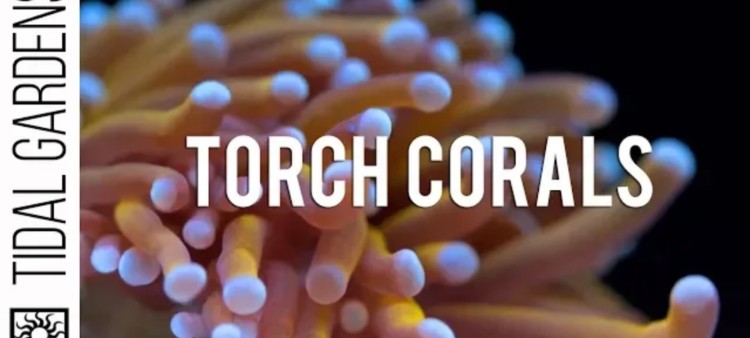Torch Coral: A Complete Care Guide
- Jul 22, 2022
- Anshika Mishra
- 217 0 0

This article will discuss a highly desirable large polyps stony coral, the Torch Coral.
Torch Coral: Genus History
Torch corals are from the genus Euphyllia, which includes other very popular LPS such as Hammer and Frog Spawn corals. The main difference between this different Euphyllia is the shape of their tips on the tentacle.
So, Torch coral has single-dot-shaped tentacles, whereas Frog Spawn has muti-branching tentacles, and hammer coral has either an anchor hammer-shaped. But, the proper way to look at different species is to look at their skeleton under a microscope.
You can also find some of Torch's tentacle bifurcating. So, it is kind of similar to Frog Spawn. But, once you have been around these Euphyllias long enough, you can easily differentiate them.
The great thing about branching corals like the Torch is that once they are fully established and replicating, propagation becomes much more accessible. Having said that, from a commercial propagation perspective, Torches don't make for that great candidate.
Their growth rate isn't fast. So, the amount of space a coral farm would have to allocate to something like growing Torches long-term doesn't make much financial sense.
Many aquaculture activities can be done at the hobbyist level, which is, in its way, fantastic.
Hardiness
Across the road, Euphyllia is a middle-of-the-road LPS. Most people that have been in the hobby for any length of time can have a degree of success with Hammers, Torches, and Frog Spawn.
Torches, however, occupy some peculiar space. First off, they don't import that well. New specimens just out of the boat are often infected with latent bacteria. So, it is common for you to lose torches just with such infections.
Next is the pest-related concern. So, if you come across some Torches that you fell in love with, always keep an eye for something like flatworms.
However, reefers love Torches because of the colorations they come in.
Care Tips
As far as flow, Torches need a little bit more flow than a typical Euphyllia. So additional might even help with that bacterial issue we discussed earlier.
So, unless you see significant signs of stress related to the flow, try to give these corals practically maximum flow. Think along the order of what you will provide an Acropora, for example.
In the lower flow, Torches tend to extend better. Still, the therapeutic benefits of having a more active water movement around these corals will greatly outweigh whatever kind of aesthetics you're looking for.
It is best to stick to the medium range of intensities for lighting. So, something in the neighborhood of 50-100 PAR. But, you might overlook a significant benefit to going higher than that. The worry is mainly overexposing them, causing them to bleach, making them further susceptible to infections.
Water Chemistry
Like any stony coral, you'll want to ensure that your water chemistry is up to PAR. Don't look for particularly elevated calcium alkalinity or magnesium. Anything hovering around the natural saltwater levels is good.
But, make sure your nitrate is in control. This coral tends to be slightly more sensitive than the other Euphyllia. As a result, higher nitrates could cause them to stress out a bit. And the stress could open the door to latent infection.
Feeding and Nutrition
Generally, reefers don't go out of their way to feed Torches, but they accept food a little bit better than the Hammers and Frog spawn.
You try feeding them Myssis, small pieces up Gound-up grill, and even high-quality pellet.
If you do decide to go down the feeding route, it is recommended to turn down the flow. This provides the coral an opportunity to grab onto the food. It is also best to get a feeding cage if you have shrimps or fishes that can irritate the corals while feeding.
As always, you don't want to overfeed. So, remember, a little bit goes a long way, and don't risk a nutrient bloom or trying to feed these Torches.






About author